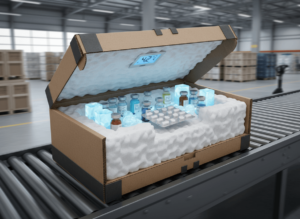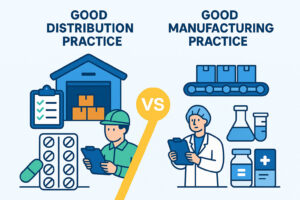Understanding the Dangerous Classifications for Detergents
Detergents are essential for cleaning in homes, industries, and healthcare settings, but they also contain chemicals that can pose hazards to health and the environment. Therefore, understanding the hazardous classifications for detergents is crucial for manufacturers, distributors, and consumers to ensure safe handling, usage, and disposal.
In this article, we’ll look into the key dangerous classifications for detergents and what they mean for safety.
The Importance of Dangerous Classification
Dangerous classifications help identify the risks associated with specific substances in detergents, guiding users in proper handling, storage, and disposal. The Globally Harmonized System of Classification and Labeling of Chemicals (GHS), adopted by many countries, classifies chemicals by their physical, health, and environmental hazards. The correct classification of detergents helps reduce risks and ensures compliance with regulatory standards.
Key Dangerous Classifications for Detergents
Detergents may be classified as dangerous goods depending on their chemical composition, specifically due to factors such as corrosiveness, flammability, and environmental hazards. Many detergents contain surfactants, bleaches, or other chemicals that can pose risks. Below are some potential classifications under the United Nations Model Regulations:
- Class 8 (Corrosive Substances) – Detergents containing strong acids or bases, such as sodium hydroxide, sulfuric acid, or bleach, may be classified as Class 8, as these chemicals can cause burns on contact with skin or eyes. Commonly found in industrial or heavy-duty cleaners, these are typically labeled as “corrosive”.
- Class 3 (Flammable Liquids) – Certain liquid detergents contain alcohol or other flammable solvents, which may classify them as Class 3 if their flashpoint is low enough. This classification is rare for general-purpose detergents but can apply to specialty or industrial cleaning solutions.
- Class 9 (Miscellaneous Dangerous Goods) – Some detergents fall under Class 9 if they contain environmentally hazardous chemicals. These might not pose immediate health risks but are harmful to aquatic life and the environment. If a detergent contains substances that are toxic to marine ecosystems, it might require labeling as an environmentally hazardous substance under Class 9.
- Class 6.1 (Toxic Substances) – This is rare for household detergents but could apply to industrial detergents containing highly toxic chemicals. For general household detergents, this classification is typically not relevant.
Labeling Requirements for Hazardous Detergents
Under GHS guidelines, hazardous detergents must be labeled with specific pictograms, signal words (such as “Danger” or “Warning”), and hazard statements. These labels provide essential information for users to understand the risks and take appropriate safety measures.
Here are the common GHS pictograms:
- Exclamation Mark – Indicates general irritation (e.g., skin or respiratory)
- Corrosion – Indicates eye damage and severe skin burns
- Environment – Indicates aquatic toxicity, highlighting environmental hazards
Labeling also includes precautionary statements that advise on safe storage, handling, and first-aid measures, such as “Store locked up” or “If in eyes, rinse cautiously with water.”
Importance of Material Safety Data Sheets (SDS)
The Material Safety Data Sheet (MSDS) is crucial when transporting dangerous goods because it provides detailed information on the hazards, handling, and emergency response procedures related to the material. Here’s why it’s relevant:
- Regulatory Compliance – Many international regulations, including IATA DGR (air), IMDG Code (sea), and ADR (road), require an MSDS to classify and transport hazardous materials correctly.
- Hazard Identification – The MSDS outlines the chemical composition, physical and health hazards, and environmental impact of the substance, ensuring proper classification under UN Dangerous Goods (DG) regulations.
- Packaging & Labeling – It also provides information on the required packaging specifications, labeling, and markings to prevent leaks, spills, or exposure during transit.
- Emergency Response – In case of an accident, spill, or fire, the MSDS provides first-aid measures, firefighting instructions, and spill containment procedures, helping emergency responders act quickly.
- Handling and Storage Guidelines – It includes details on temperature sensitivity, ventilation needs, and incompatibilities to ensure the cargo is stored and handled safely.
Safe Storage of Hazardous Detergents
Storing detergents classified as dangerous goods (DG) requires careful handling to ensure safety and compliance with regulations. Here are key storage guidelines:
Identify the Hazard Class
Check the Material Safety Data Sheet (MSDS) or Safety Data Sheet (SDS) to determine the hazard classification (e.g., corrosive, flammable, oxidizing). Common classes for detergents include:
- Class 8 (Corrosive substances)
- Class 9 (Miscellaneous dangerous substances)
Storage Area Requirements
- Well-Ventilated – Store in an area with good airflow to prevent fume buildup.
- Cool & Dry – Keep away from direct sunlight, heat sources, and moisture.
- Separate from Incompatible Goods – Do not store near acids, oxidizers, or food items.
- Secondary Containment – Use spill trays or bunded pallets to contain leaks.
Proper Containers & Labeling
- Keep detergents in original, tightly sealed containers.
- Clearly label with hazard symbols and handling instructions.
- Use corrosion-resistant shelving (avoid metal for corrosive products).
Safety Precautions
- Provide Personal Protective Equipment (PPE) such as gloves and goggles for handling
- Install emergency eyewash stations nearby
- Have spill kits ready to contain leaks
- Store away from ignition sources if flammable
Compliance & Documentation
- Follow IATA’s local dangerous goods regulations
- Maintain MSDS/SDS records for all stored detergents
- Train staff on handling and emergency procedures
Safe Handling of Hazardous Detergents
Handling hazardous detergents requires strict safety measures to ensure the well-being of workers, prevent spills, and comply with international dangerous goods (DG) regulations. Whether in warehousing, transportation, or distribution, logistics companies like TFI follow the below practices to handle these chemicals safely:
Hazard Identification & Classification
- Refer to the Material Safety Data Sheet (MSDS) to determine the hazard class
- Ensure all containers are clearly labeled with the proper UN number, hazard symbol, and handling instructions.
- Follow international DG regulations such as IMDG (sea), IATA (air), ADR (road), and OSHA (workplace safety).
Safe Handling & Storage in Warehouses
- Store hazardous detergents in designated DG storage zones, away from food items, flammable substances, and incompatible chemicals.
- Use spill containment systems like bunded pallets to prevent leaks from spreading.
- Maintain proper ventilation to avoid fume buildup.
- Ensure workers use Personal Protective Equipment (PPE) such as gloves, safety goggles, and protective clothing.
Transportation & Distribution Safety
- Use DG-approved packaging to prevent leaks or damage during transit.
- Label and mark shipments with appropriate hazard symbols and placards.
- Ensure drivers and transport personnel are trained in DG handling and aware of emergency response procedures.
- Secure hazardous detergents properly in containers or vehicles to prevent movement or spillage during transit.
Emergency Response & Spill Management
- Have spill kits readily available in warehouses and vehicles.
- Train staff on emergency spill containment and cleanup procedures.
- Install eye wash stations and first aid kits in handling areas.
- Implement a fire safety plan, including proper extinguishers for chemical fires.
Compliance & Employee Training
- Conduct regular DG handling training for warehouse staff and transport personnel.
- Keep SDS records accessible for quick reference in case of emergencies.
- Ensure compliance with local and international DG transport and storage laws.
- Perform routine safety audits to identify and mitigate risks.
By implementing these best practices, logistics companies can ensure the safe and compliant handling of hazardous detergents, protecting their workforce, the environment, and supply chain operations.
TFI: Your Trusted Partner in Transporting Detergents Via Air
Understanding the hazardous classifications for detergents is essential to ensure safety and compliance, whether at home or the workplace. From skin irritants to environmental hazards, detergents contain various chemicals that require proper handling and storage. By following labeling guidance, using PPE, and considering eco-friendly alternatives, users can minimize the risks associated with these everyday cleaning products. Prioritizing safety through awareness and best practices helps protect people and the environment, contributing to a safer and healthier world.
Do you need help with handling and transporting detergents via air? As a licensed agent by the General Civil Aviation Authority, TFI is your trusted partner for ensuring these hazardous materials are handled and transported to their destination safely. Our in-house team of certified DG specialists and customs brokers will help you navigate DG acceptance & handling, DG packing, and customs brokerage with ease.
Get in touch with us today to learn more about how we can provide you with tailored solutions!




